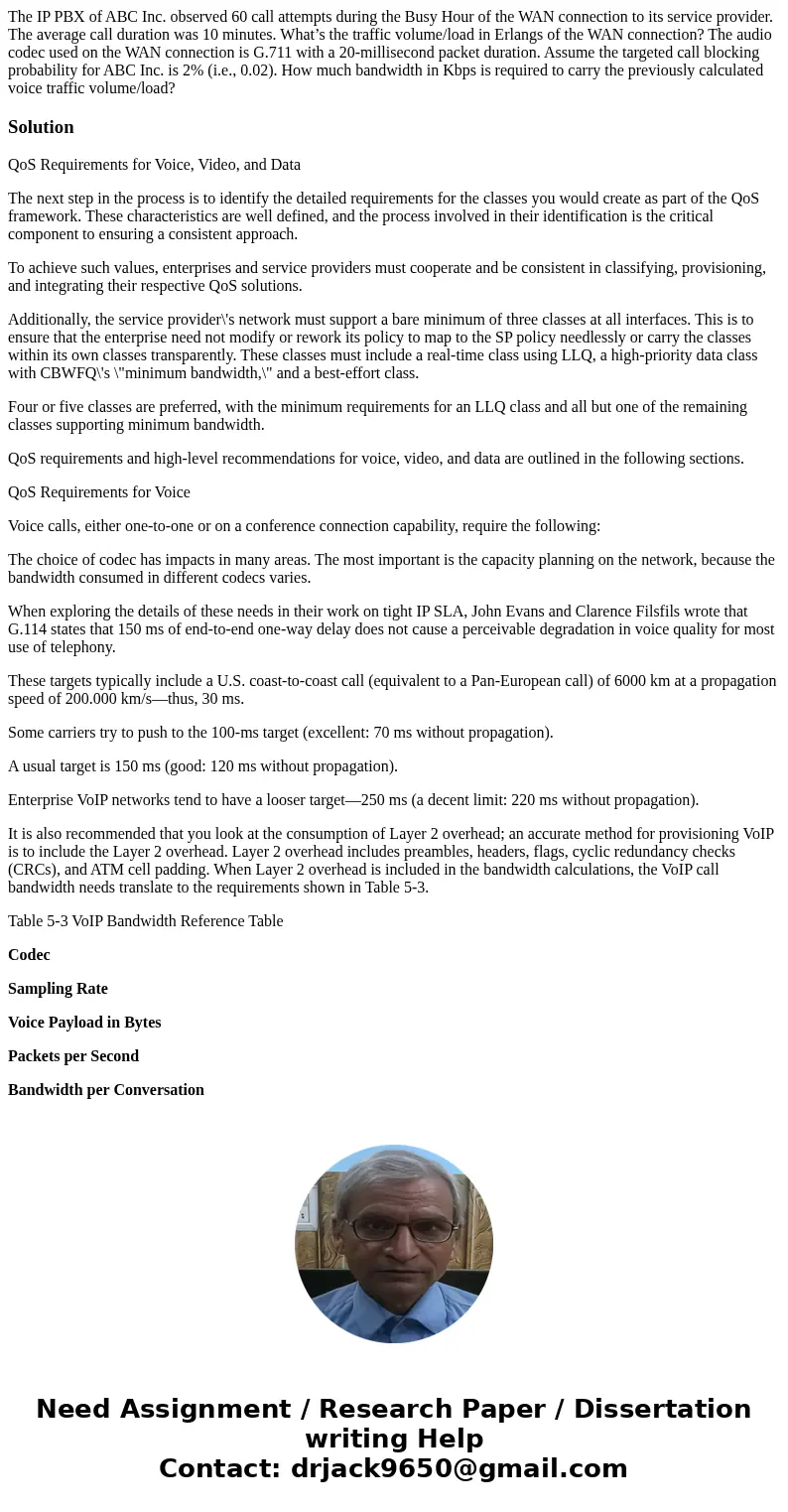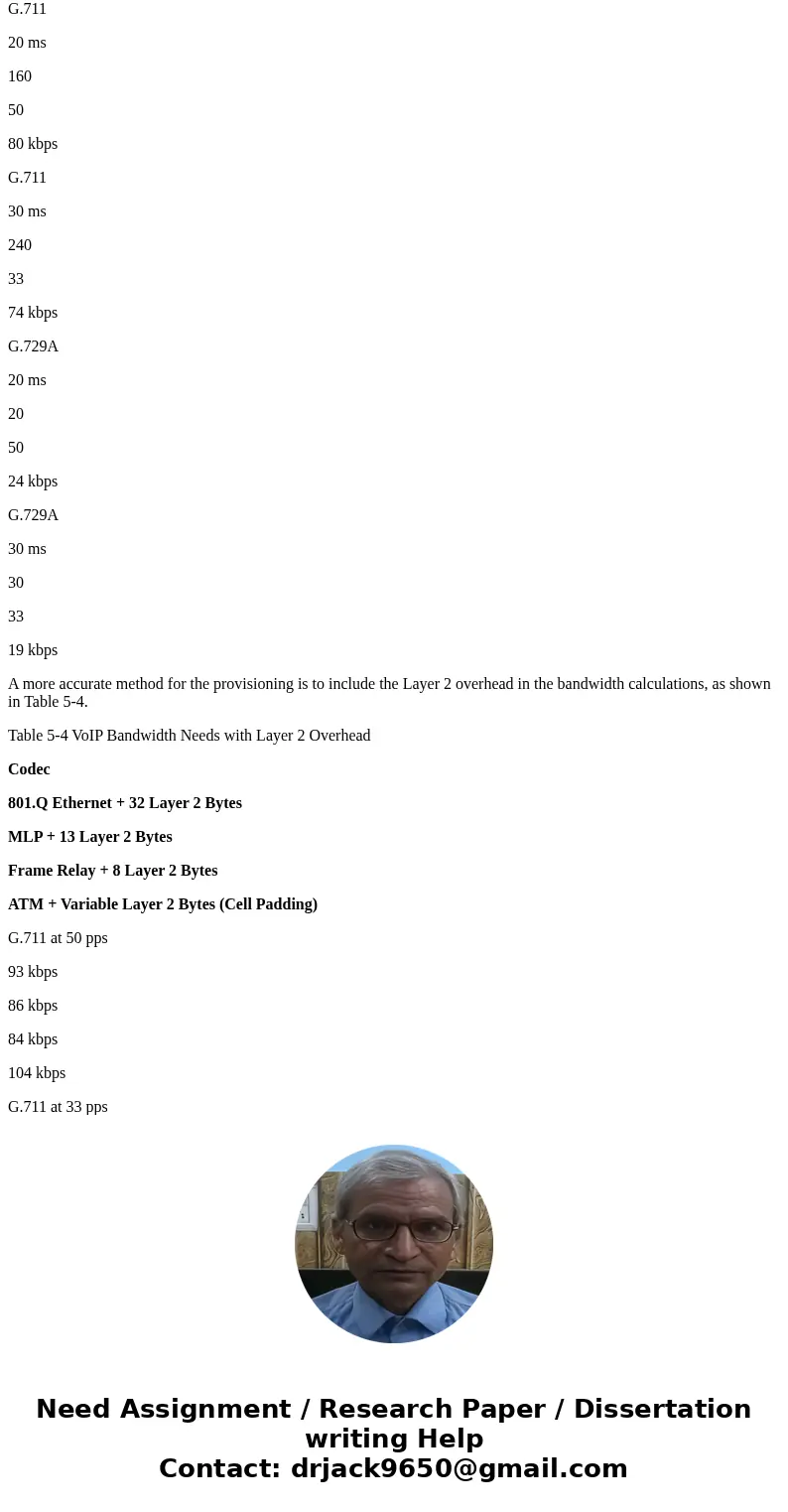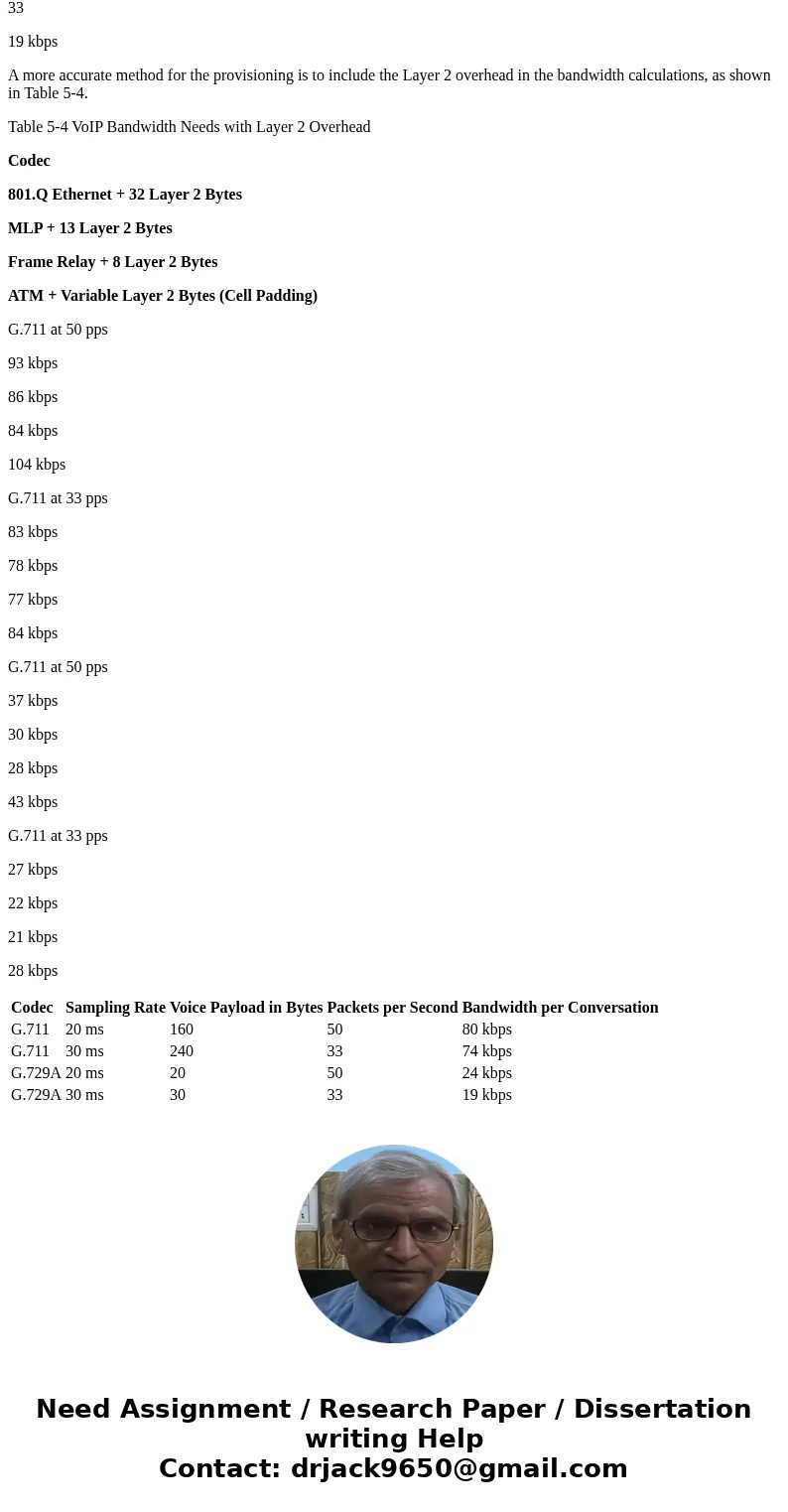The IP PBX of ABC Inc observed 60 call attempts during the B
The IP PBX of ABC Inc. observed 60 call attempts during the Busy Hour of the WAN connection to its service provider. The average call duration was 10 minutes. What’s the traffic volume/load in Erlangs of the WAN connection? The audio codec used on the WAN connection is G.711 with a 20-millisecond packet duration. Assume the targeted call blocking probability for ABC Inc. is 2% (i.e., 0.02). How much bandwidth in Kbps is required to carry the previously calculated voice traffic volume/load?
Solution
QoS Requirements for Voice, Video, and Data
The next step in the process is to identify the detailed requirements for the classes you would create as part of the QoS framework. These characteristics are well defined, and the process involved in their identification is the critical component to ensuring a consistent approach.
To achieve such values, enterprises and service providers must cooperate and be consistent in classifying, provisioning, and integrating their respective QoS solutions.
Additionally, the service provider\'s network must support a bare minimum of three classes at all interfaces. This is to ensure that the enterprise need not modify or rework its policy to map to the SP policy needlessly or carry the classes within its own classes transparently. These classes must include a real-time class using LLQ, a high-priority data class with CBWFQ\'s \"minimum bandwidth,\" and a best-effort class.
Four or five classes are preferred, with the minimum requirements for an LLQ class and all but one of the remaining classes supporting minimum bandwidth.
QoS requirements and high-level recommendations for voice, video, and data are outlined in the following sections.
QoS Requirements for Voice
Voice calls, either one-to-one or on a conference connection capability, require the following:
The choice of codec has impacts in many areas. The most important is the capacity planning on the network, because the bandwidth consumed in different codecs varies.
When exploring the details of these needs in their work on tight IP SLA, John Evans and Clarence Filsfils wrote that G.114 states that 150 ms of end-to-end one-way delay does not cause a perceivable degradation in voice quality for most use of telephony.
These targets typically include a U.S. coast-to-coast call (equivalent to a Pan-European call) of 6000 km at a propagation speed of 200.000 km/s—thus, 30 ms.
Some carriers try to push to the 100-ms target (excellent: 70 ms without propagation).
A usual target is 150 ms (good: 120 ms without propagation).
Enterprise VoIP networks tend to have a looser target—250 ms (a decent limit: 220 ms without propagation).
It is also recommended that you look at the consumption of Layer 2 overhead; an accurate method for provisioning VoIP is to include the Layer 2 overhead. Layer 2 overhead includes preambles, headers, flags, cyclic redundancy checks (CRCs), and ATM cell padding. When Layer 2 overhead is included in the bandwidth calculations, the VoIP call bandwidth needs translate to the requirements shown in Table 5-3.
Table 5-3 VoIP Bandwidth Reference Table
Codec
Sampling Rate
Voice Payload in Bytes
Packets per Second
Bandwidth per Conversation
G.711
20 ms
160
50
80 kbps
G.711
30 ms
240
33
74 kbps
G.729A
20 ms
20
50
24 kbps
G.729A
30 ms
30
33
19 kbps
A more accurate method for the provisioning is to include the Layer 2 overhead in the bandwidth calculations, as shown in Table 5-4.
Table 5-4 VoIP Bandwidth Needs with Layer 2 Overhead
Codec
801.Q Ethernet + 32 Layer 2 Bytes
MLP + 13 Layer 2 Bytes
Frame Relay + 8 Layer 2 Bytes
ATM + Variable Layer 2 Bytes (Cell Padding)
G.711 at 50 pps
93 kbps
86 kbps
84 kbps
104 kbps
G.711 at 33 pps
83 kbps
78 kbps
77 kbps
84 kbps
G.711 at 50 pps
37 kbps
30 kbps
28 kbps
43 kbps
G.711 at 33 pps
27 kbps
22 kbps
21 kbps
28 kbps
| Codec | Sampling Rate | Voice Payload in Bytes | Packets per Second | Bandwidth per Conversation |
| G.711 | 20 ms | 160 | 50 | 80 kbps |
| G.711 | 30 ms | 240 | 33 | 74 kbps |
| G.729A | 20 ms | 20 | 50 | 24 kbps |
| G.729A | 30 ms | 30 | 33 | 19 kbps |



 Homework Sourse
Homework Sourse